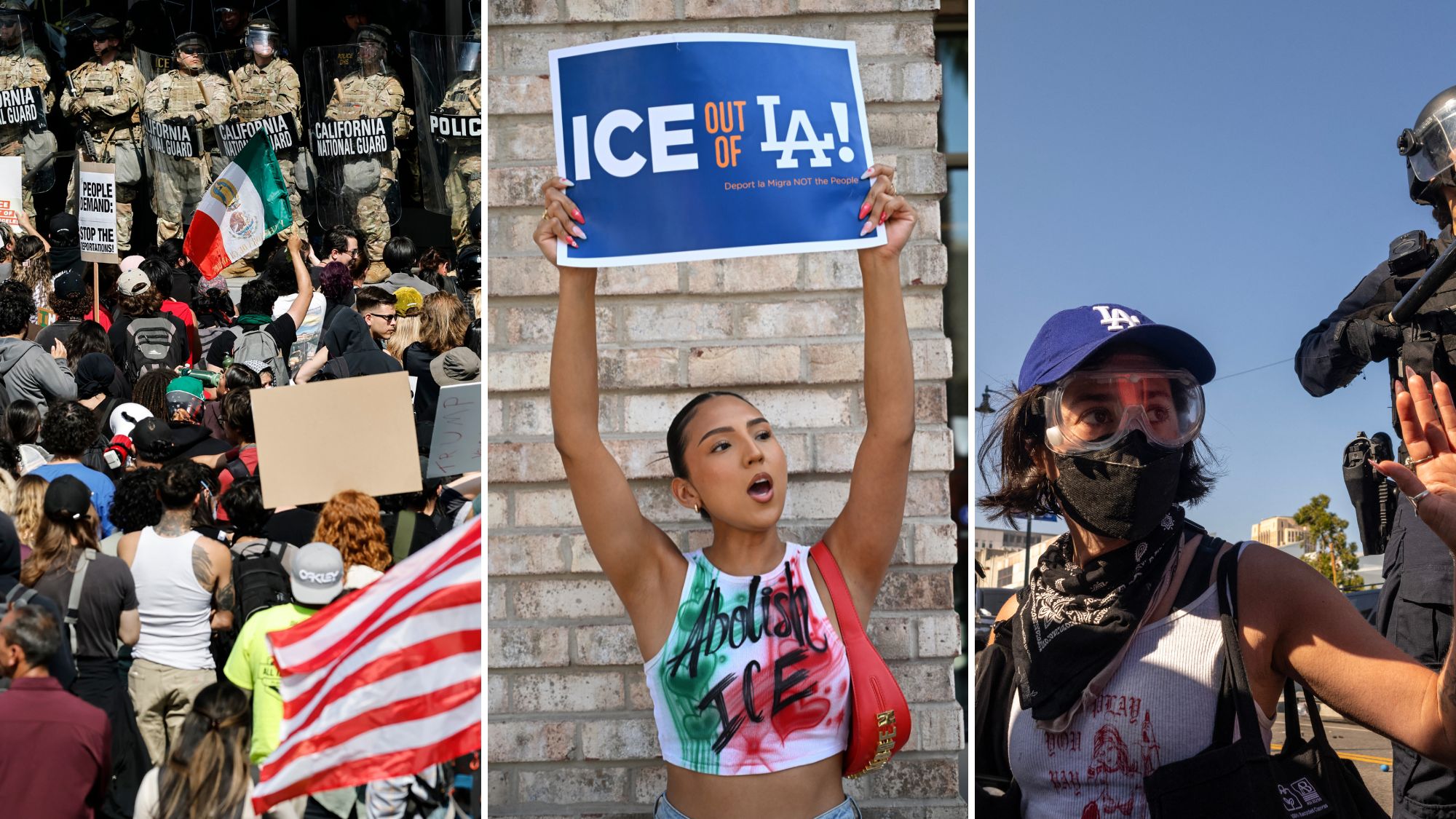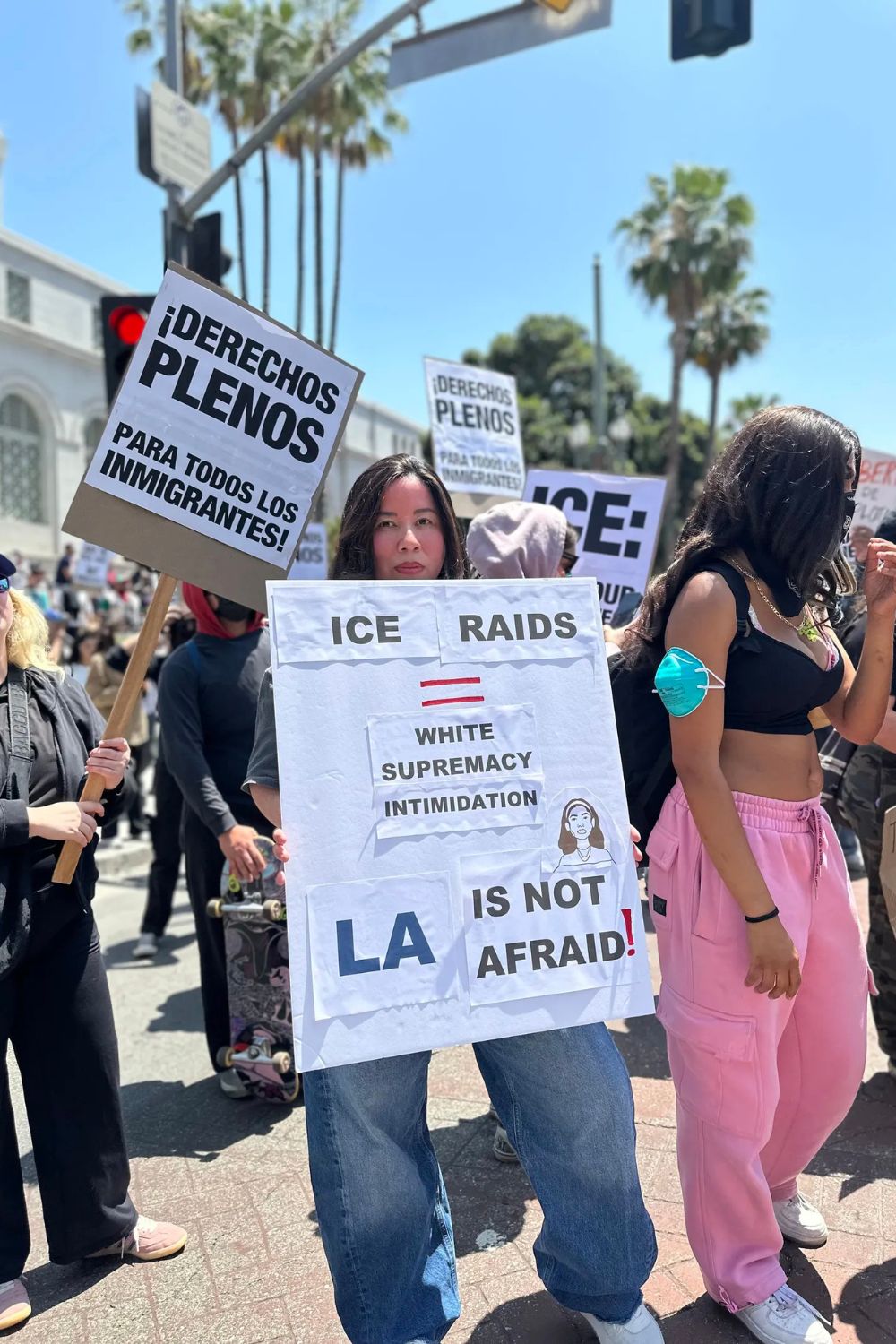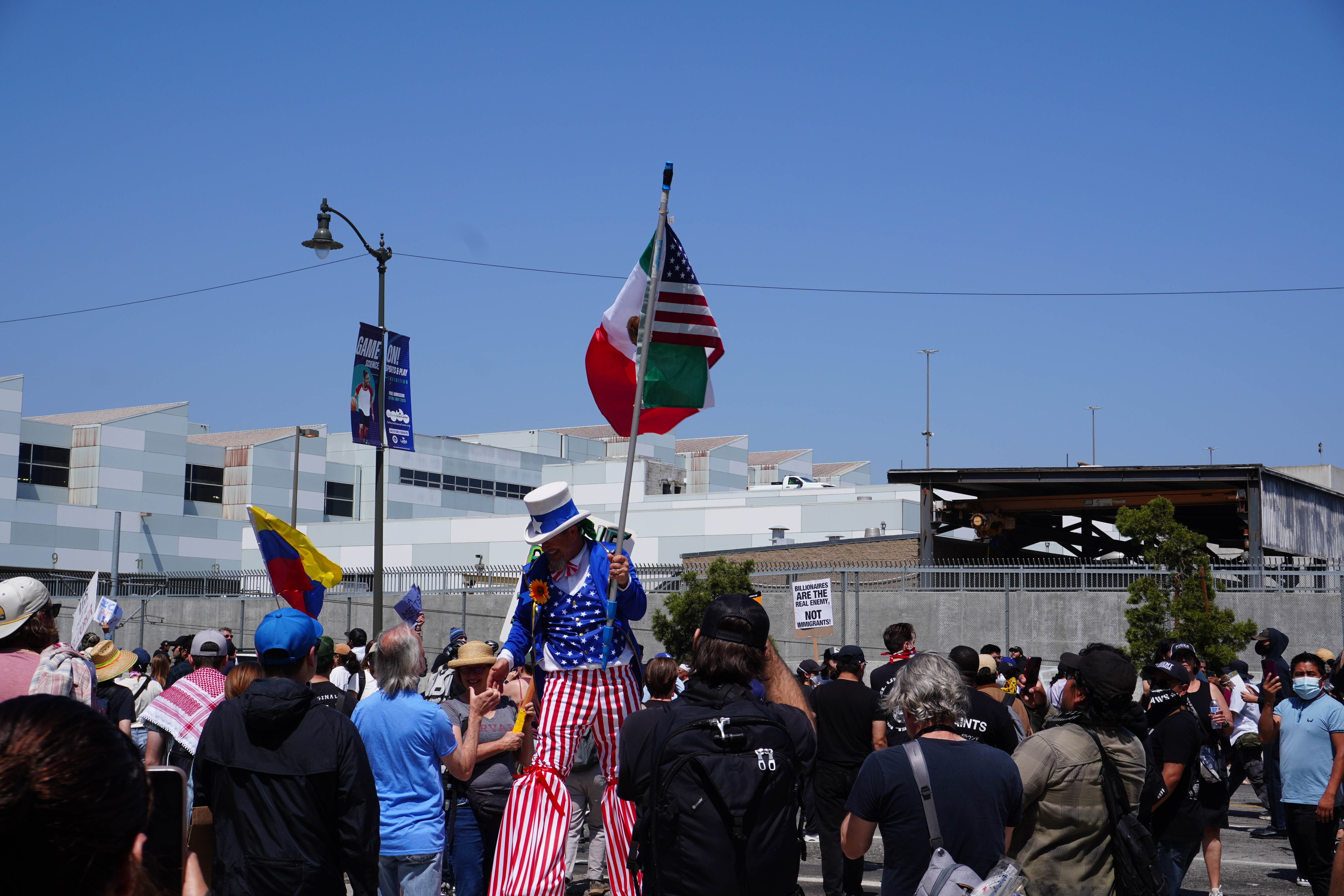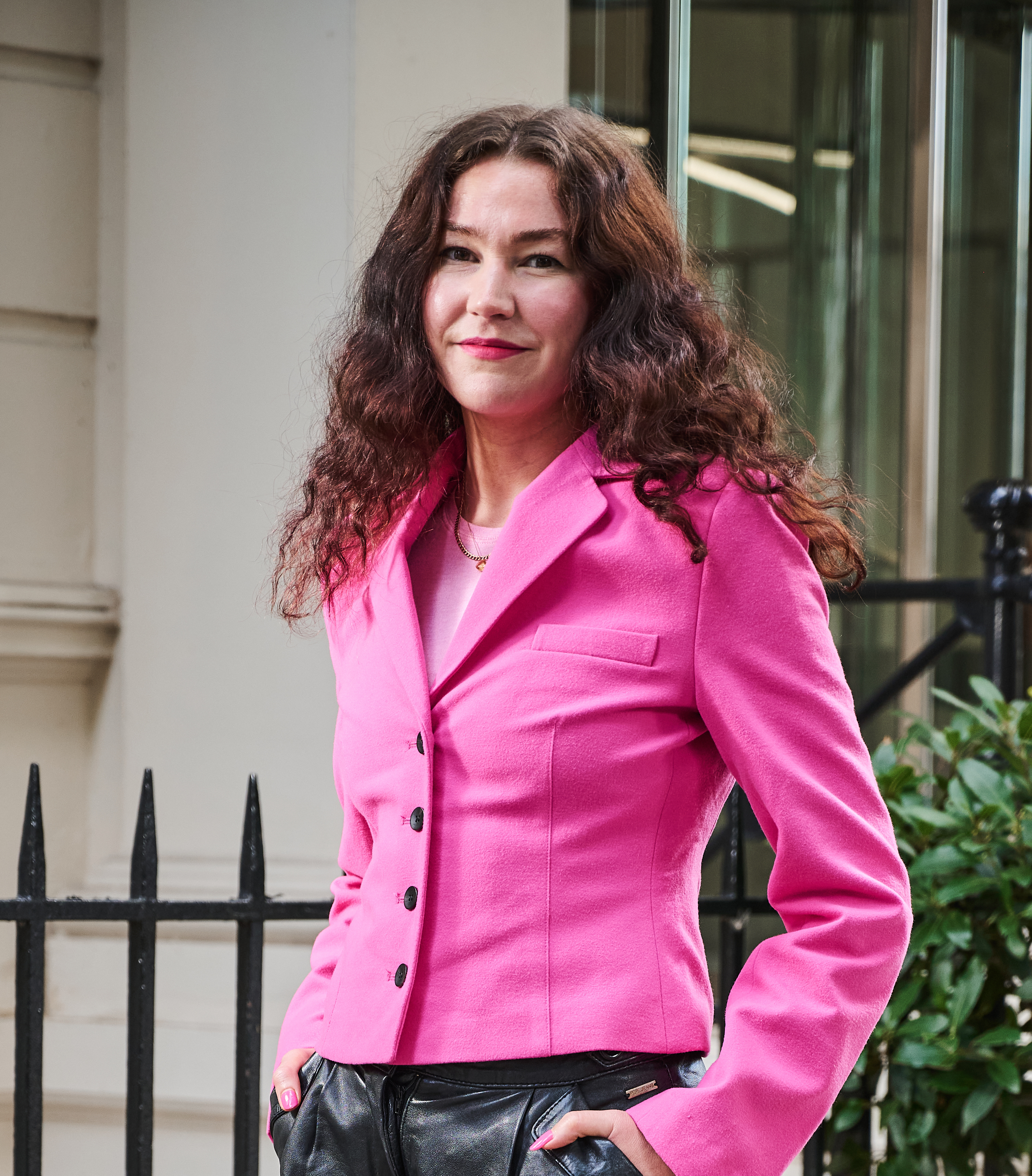Los Angeles Uprises as Immigrants, Families, and Allies Protest Against Trump’s Crackdown
As ICE raids and the National Guard descend on immigrant neighbourhoods, Los Angeles erupts in protest—3 residents share their accounts from on the ground


Los Angeles locals share their powerful stories of resistance, solidarity, and the fight to protect their communities from a government that is turning fear into policy.
“I fear for the safety of my neighbours, many of whom have been here for decades. The fear that many immigrants live with because of ICE is debilitating and pervasive... it will impact future generations,” said Iman Shervington, a resident of Pico-Union, as ICE raids and National Guard deployments shook her community.
As sirens rang through downtown Los Angeles and helicopters churned overhead, thousands gathered in protest—not just against heightened immigration enforcement, but in defence of their communities. Sparked by the Trump administration’s policies—especially the National Guard’s deployment and increased ICE activity—these demonstrations drew a cross-section of Angelenos. For many, these protests were deeply personal.
“I am a naturalised US Citizen who came to the US as a refugee after my dad was held as a political prisoner for six years after the Vietnam War,” said Uyen, a local business owner in Silver Lake. “I was also out at a demonstration in downtown LA, and it was empowering and inspiring to see so many people, especially young people from diverse backgrounds, advocating for their communities.”
From her restaurant, that prioritises aid to those with the fewest resources—including unhoused residents and undocumented families—Uyen sees protest as a civic duty. “I feel free to exercise my rights and use my freedom of speech, of assembly, and of guaranteed equal treatment under the law,” she said, speaking of her status as a naturalised US Citizen who can speak up in ways that undocumented citizens cannot afford to.
Just three miles away, Shervington also sees the toll of federal actions. “The presence of ICE and the National Guard in my community is unsettling and disgusting,” she said. “It’s not just immigrants who feel this fear. It’s felt by anyone who appears to be an immigrant.”
Despite the fear, Shervington finds hope in the solidarity that emerges. “To see how much the community is stepping up to take care of each other... it gives me hope.”
Celebrity news, beauty, fashion advice, and fascinating features, delivered straight to your inbox!
Here, three residents share their experiences on the frontlines of Los Angeles’ fight against the Trump administration’s immigration enforcement policies.
Evelyn Melendez-Payne
“Last week, like everyone else, I witnessed the heartbreaking images of the ICE raids happening in my city. I found it hard to sleep, hard to focus. My initial instinct was to turn off social media and retreat. By Saturday, I was still sick with the same feelings. I couldn’t shake them. I knew from experience that action helped me cope, so I gently texted my husband: “Hey… I might drop by the protest tomorrow. I think it might make me feel better.” He replied “Okay” and asked if I wanted him and our 11-year-old son to come. I firmly said no. We’ve protested together before. Once for the separation of families at the border during Trump’s first term, and then during the Black Lives Matter protests. My husband is Black American and it’s important for our family that we show unity as a family. But something about this moment felt different. The tone of the current administration and the visible deployment of the National Guard made me feel more protective of their safety.”

Evelyn Melendez-Payne at the Los Angeles protests on Saturday 7th June
We feel the desperation, fear, and heartbreak that ICE brings into our communities. It hangs in the air like a storm cloud.
“I didn’t tell my immigrant parents (now U.S. citizens) about my plan. I know they would’ve preferred I stay home, quiet and obedient. Which they will tell you has never been in my nature. Still, their fears secretly live in me. I even considered wearing a bandana to hide my identity. I’d heard facial recognition was being used. Could they find a way to punish me for peacefully protesting?
While I was there, I saw no violence or aggression — maybe those images happened later. What I experienced was a gathering of people who were firm, unafraid, and full of purpose. It was beautiful. People of all ages, all countries of origin, and so many allies of all colours showing up in solidarity. Volunteers passed out snacks, Gatorade, and bottled water. The energy was strong but peaceful. I felt safe. I felt seen. I felt like I contributed something.”
Gabriel*
“I’ve been protesting ICE since I found out they were locking kids in cages during Trump’s first term. My parents are immigrants, and so is my spouse. Last week, I saw posts on my neighbourhood Instagram account that ICE was potentially spotted in Highland Park. Then news broke wide when they raided day labourers in the Home Depot parking lot on Friday. It’s absolutely insane to abduct hardworking members of our community.
At first, I thought it might be a one-off situation—until the raids erupted again on Saturday. Then I heard the National Guard was being sent in, and I knew it was time for the whole city to show up and tell the fascists they’re not welcome here.
I wanted to get involved but wasn’t sure where to best direct my attention. Then I saw a post on Instagram about a protest on Sunday at 2 PM at City Hall. I shared the story, and a friend reached out to join me. We took public transit downtown, but they had already shut down the Little Tokyo stop to try to keep people from gathering. We got off at the next stop and quickly found the crowd amassed at City Hall.”

Los Angeles protests
“There was a lot of intense energy in the air—tons of signs, sound trucks, and people sharing resources. Almost immediately after we arrived around 2:45 PM, people started marching. Folks were handing out water, masks, ‘Know Your Rights’ cards, and offering mutual aid. There was an Uncle Sam character on stilts and protest merch for sale on top of a blocked-in Waymo. Chants were pouring in from every direction as we moved through the streets.
We encountered half a dozen police vehicles trying to corral us, but the marchers yelled for them to move, and they eventually retreated and sped away. Protesters took over overpasses, and people were cheering us on. Later, we encountered another police blockade, where riot cops started launching smoke grenades, so the protest rerouted.
I left not long after that. From what I saw online later, things intensified after I left, with highways taken over and some cars set on fire. It seems those cars weren’t burned by protesters but by kids taking advantage of the chaos for their own reasons.”
Aisha Wallace-Palomares

Aisha Wallace-Palomares at the Los Angeles protests on Sunday 8th June 2025
“I received a phone call from one of my family members who was in Los Angeles visiting family. She notified me that there had been mass raids across Los Angeles—in the fashion district and a few other locations—and that, in response to these large immigration raids, Los Angeles residents took to the streets in downtown LA. I had a feeling that on Saturday there were going to be more protests, and I decided as a journalist, I needed to report and document what was happening.
On Saturday, around 3 p.m., I photographed some protesters on the bridge in downtown LA holding signs saying “ICE out of LA.” There was also a Guatemalan flag. From there, I walked to the Metropolitan Detention Center. There were a lot of LAPD and sheriff cars parked along the freeway entrances, and then I walked to the Metropolitan Detention Center, where there were about 50 demonstrators holding signs and chanting.
There were remnants of tear gas dust being swept up into the air, causing me to cough. I observed protesters handing out personal protective gear: they were giving out water, they had milk, they were giving out masks. It was largely peaceful. A lot of the cars driving by were honking in support.”
There were a lot of protesters trying to protect fellow protesters.
“It was not a riotous crowd; it was not as exaggerated as people made it seem. The people in power there are the federal agents — you know, they are the ones with the weapons. One of the protesters on Saturday tried to push the crowd away from the metal garage. He was saying that this is what the Trump administration is trying to get the protesters to look like. He was trying to calm the crowd down.
But I could feel that tensions were rising, and I thought now is the time for me to get out, because I don't know how to handle a more dangerous situation, and I didn’t have anything—aside from a small media badge—that was identifying me as press. So I felt like it could get complicated for me being there. As I was walking, I started to hear the deployment of pepper balls, and then I started to see people start running.”
One of the most important rights that people living in the US have is the right to assemble, the right to protest, and freedom of speech.
“I saw a flyer on social media about a protest at 2 p.m. at City Hall in downtown Los Angeles on Sunday, so I decided to cover that. That’s where I saw the National Guard—maybe 10 feet away from protesters. This was a change from the day before. It was a tense situation.
After documenting the scene at the Metropolitan Detention Center on Sunday, I decided to head to the City Hall protest—there were two separate protests happening that day. In front of the Los Angeles City Hall, there was a huge crowd. There were thousands of people. I saw a lot of people, I saw families, I saw people from all different ethnicities and races. It was a very diverse crowd.
I think it tells you something when there were 50 people at the Metropolitan Detention Center on Saturday night. On Sunday, after President Trump deployed the National Guard, thousands of people in Los Angeles took to the streets.
These protests were largely nonviolent and peaceful, so why was the National Guard deployed by the Trump administration to Los Angeles when California officials did not request it? That's my question.”

Mischa Anouk Smith is the News and Features Editor of Marie Claire UK.
From personal essays to purpose-driven stories, reported studies, and interviews with celebrities like Rosie Huntington-Whiteley and designers including Dries Van Noten, Mischa has been featured in publications such as Refinery29, Stylist and Dazed. Her work explores what it means to be a woman today and sits at the intersection of culture and style. In the spirit of eclecticism, she has also written about NFTs, mental health and the rise of AI bands.